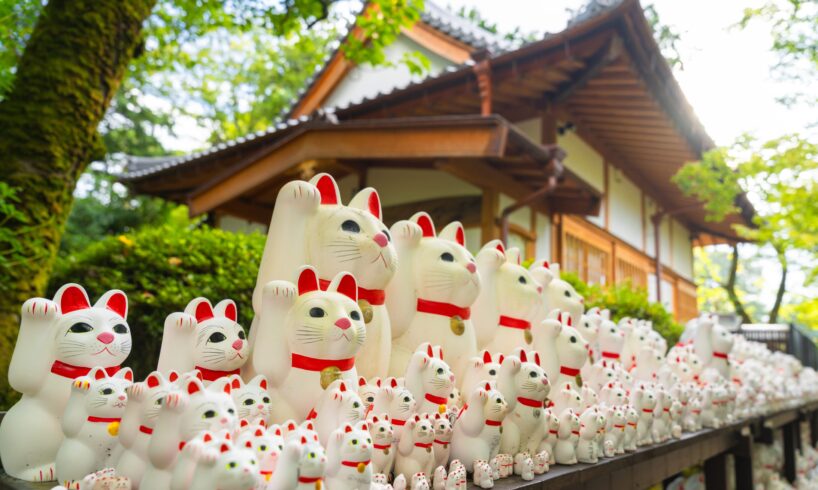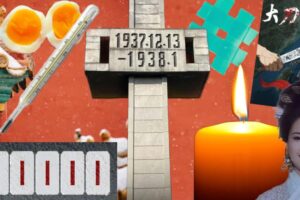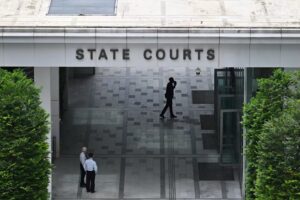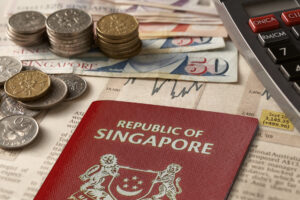
Tokyo is a city defined by juxtaposition. Eclectic modern architecture, avant-garde art and a kaleidoscope of aesthetics mingle with centuries-old temples, each with distinct histories and customs. For first-time visitors wanting to pay a visit to these historic sanctuaries, here are a few of the most iconic temples in Tokyo.
Although many of these temples see a significant number of tourists year-round, please keep in mind that they are places of worship. Be mindful of worshippers and respectful of your surroundings.
Sensoji Temple (Asakusa)
Sensoji holds the title of Tokyo’s oldest temple, its origins tracing back to 645 CE. Dedicated to Kannon, the bodhisattva of mercy, it’s the city’s most well-known spiritual destination. The temple complex is a vibrant center of activity, beginning with the colossal outer gate — the Kaminarimon (Thunder Gate) — and continuing along the famous shopping lane, Nakamise-dori.
The avenue of souvenir shops, food stalls and beyond leads directly to the main hall and the five-story pagoda. Sensoji’s enduring popularity makes it the most visited religious site in the entire city; expect significant crowds year-round, but especially around New Year’s Day.
Zojoji Temple (Minato)
Strikingly located at the base of Tokyo Tower, Zojoji served as the family temple of the Tokugawa, the rulers of the eponymous shogunate that ruled Japan during the Edo period. This temple’s history is inextricably linked to the country’s samurai past, with the mausoleums of several shogun located on its grounds.
The main gate, the Sangedatsumon, dates to 1622. A designated Important Cultural Property, it is the sole original structure, having survived fires, natural disasters and WWII air raids. The view of the traditional gate against the backdrop of the soaring Tokyo Tower is an iconic sight, captured by many photographers.
Gotokuji Temple (Setagaya)
A quieter, suburban site, Gotokuji Temple is famous for its cultural association with the maneki neko (beckoning cat). According to legend, a cat here invited a feudal lord to take shelter from a storm, saving his life and bringing prosperity to the temple. Today, visitors leave hundreds of these cat figurines as offerings, creating a uniquely charming and photogenic space dedicated to good fortune for families, businesses and beyond.
In recent years, the temple has seen an unprecedented number of visitors due to social media exposure. So again, be sure to remain respectful if you decide to visit.
Sengakuji Temple (Minato)
Sengakuji is known throughout Japan as the burial site of the 47 Ronin, the celebrated group of masterless samurai whose tale of loyalty and vengeance is a cornerstone of Japanese lore. Visitors flock to the temple to pay their respects and leave incense at the graves of these historical figures, making it a uniquely intriguing destination for those interested in samurai history.
Tsukiji Honganji Temple (Tsukiji)
The architectural style of Tsukiji Honganji (also rendered “Tsukiji Hongwanji”) sets it apart from all other Japanese temples. While most feature traditional designs, Honganji was rebuilt in 1934 in a unique style inspired by ancient Buddhist architecture in India and other parts of South Asia. Features to look out for include a stone facade and elaborate animal carvings, like winged lions, elephants and creatures called “grotesques.” Elsewhere, you’ll find other unusual elements, including a pipe organ in the main hall and stained glass over the temple entrance. It’s a stunning landmark to check out if you’re in the Tsukiji Market area.
Tennoji Temple (Yanaka)
Located in the quiet, traditional neighborhood of Yanaka, Tennoji is an ancient gem dating back to the year 1274, making it one of the oldest temples in Tokyo. Dedicated to Bishamonten, the god of warriors and fortune in battle, Tennoji is also a stop on the Yanaka Seven Gods of Fortune pilgrimage. The temple grounds — which once included part of the adjacent Yanaka Cemetery, final resting site of many notable historical figures — blend history with modern design. A can’t-miss highlight is the iconic Tennoji Daibutsu: a bronze Buddha statue built in 1690.
Related Posts
Discover Tokyo, Every Week
Get the city’s best stories, under-the-radar spots and exclusive invites delivered straight to your inbox.





